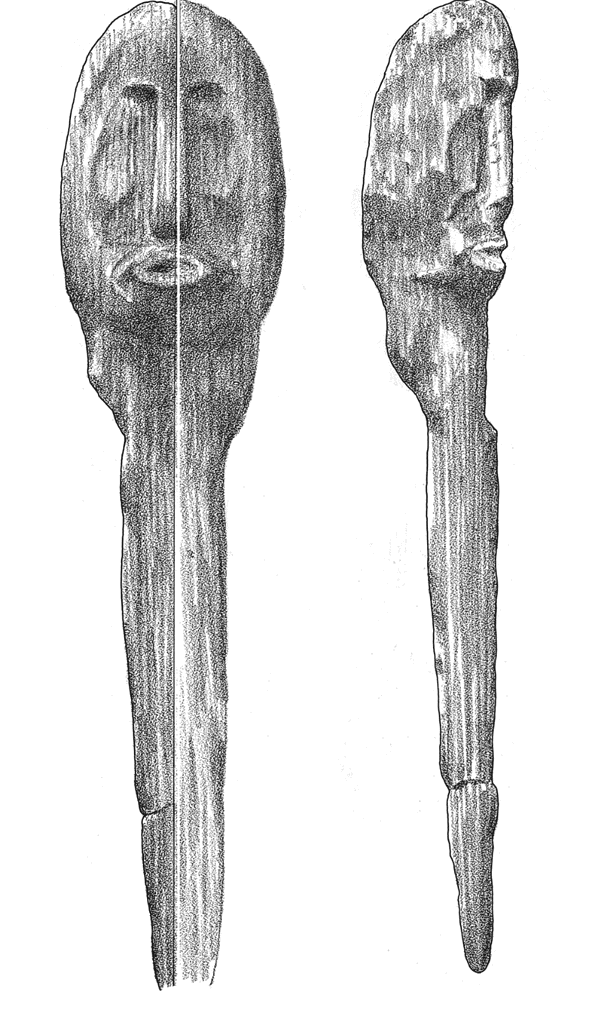
For centuries, the heather-covered landscape of Hezingen in the eastern Netherlands held a deep secret. It’s an unassuming place — silent, save for the rustling trees and the occasional call of birds. You wouldn’t think much has ever happened there. But beneath the soil, there lies evidence of a forgotten pagan cult from the early Middle Ages.
Archaeologists following a trail of gold coins and jewelry have revealed a sacred space where ritual offerings, sacrifice, and perhaps even conversion from paganism to Christianity took place over a century. All of this happened (where else) around the estate of one of the time’s richest people.
A pagan temple
The finding started in 2020 and 2021 when metal detectorists kept finding coins in the area. Archaeologists decided to investigate in more detail and found over 200 objects — mostly gold coins (tremisses), sceattas (early medieval silver coins), and elaborate pendants — were recovered from an area roughly 40 meters long and 15 meters wide.
The coins originated from various regions, including those minted by Madelinus, a moneyer from the Frisian trading hub of Dorestad. Others came from Frankish, Anglo-Saxon, and Lower Rhine territories, suggesting that Hezingen was connected to extensive trade and cultural networks.
But the true revelation came when archaeologists unearthed what appears to be a large sanctuary at the heart of the site.
This sacred space featured a 30-meter-long row of wooden posts aligned with the rising and setting sun during the spring and autumn equinoxes, possibly serving as a solar observatory. Nearby, a massive boulder stood — perhaps used in rituals. Some of the gold coins were found inside postholes, hinting that offerings may have been placed on or near the wooden structures before they decayed or were removed.
“The four rows of poles are [aligned] exactly east-west,” explains Jan-Willem de Kort, one of the study authors. Because of the high elevation, the sun rises here at the spring equinox exactly in the east (this is easy to check with solar panel software these days).
This suggests that the site was not merely a hidden wealth deposit but an active religious center where offerings were made to gods, spirits, or even ancestors.

What exactly was happening at Hezingen?
The site bears all the hallmarks of a pagan temple. It’s linked to the Earth’s cycles and some of the artifacts, including gold pendants with Germanic animal motifs, might have been dedicated to gods like Wodan (Odin) or Donar (Thor), reflecting beliefs common among the Saxons and Frisians of the time. A peculiar kidney-shaped gold pendant found at the site may symbolize Wodan’s ravens, creatures associated with the god’s role as a divine seer.
“The finds themselves give no indication as to which gods or other supernatural forces were invoked here, although the kidney-shaped pendant could be seen as a symbolic representation of Wodan and his ravens. However, not only Wodan, Donar and Saxnote were worshipped at that time, but also divinities of lesser importance, spirits, giants and ancestors,” the researchers write in the study.
Furthermore, the Hezingen cult site is located near several Neolithic burial mounds, which may have been important spots for people in the 7th century. This continuity of sacred landscape use is a pattern observed in other parts of Europe, where later communities often repurposed or built upon sites with deep historical significance.

The site could have also hosted animal sacrifices. When researchers analyzed the soil, they found unusually high phosphate levels, which could indicate decomposed organic remains — possibly animal bones or ashes from burnt offerings. However, no direct skeletal evidence has been found to confirm this theory.
The site appears to have been used intensely for rituals. Interestingly, however, the site’s use appears to have ceased abruptly by the late 7th or early 8th century — at least fifty years before the formal Christianization of the region. This suggests that the local elite, who likely controlled the site, may have adopted Christianity earlier than previously thought, or at least distanced themselves from collective pagan practices.
“I think that this cult site was mainly used by local elites to emphasize their own status, and of course, you do that pre-eminently with valuables. The finds at the other cult sites are probably more the result of personal offerings and thus less precious,” De Kort said in a statement.
A window into a lost world
If De Kort is correct, the Hezingen cult site offers a rare glimpse into a lost world — one where people gathered on a sacred hill to honor their gods with gold, silver, and sacrifice. It also sheds light on the complex transition from paganism to Christianity, challenging how we interpret similar archaeological discoveries.
For instance, one particular type of ritual that seems to be carried out is called diobolgeldæ, which can be translated as the ‘devil’s money’.
“In several cultures, coins did not have a purely monetary function. As ‘devotional instruments’ (Laugerud and Skinnebach 2007, 10–11), they played an important role in religion and ritual practice. One may even argue that the offering of coins and other valuables was a kind of social gift-exchange system to the gods,” the researchers write.
For now, there are many questions still unanswered about the site. The gold and silver of Hezingen remain silent witnesses to a time when different gods were worshipped and the land and humans sought their favor with the devil’s money.
Journal Reference: Jan-Willem De Kort et al, Diobolgeldæ (The Devil’s Money): The Early-Medieval Cult Site of Hezingen, The Netherlands, Medieval Archaeology (2024). DOI: 10.1080/00766097.2024.2419198.


